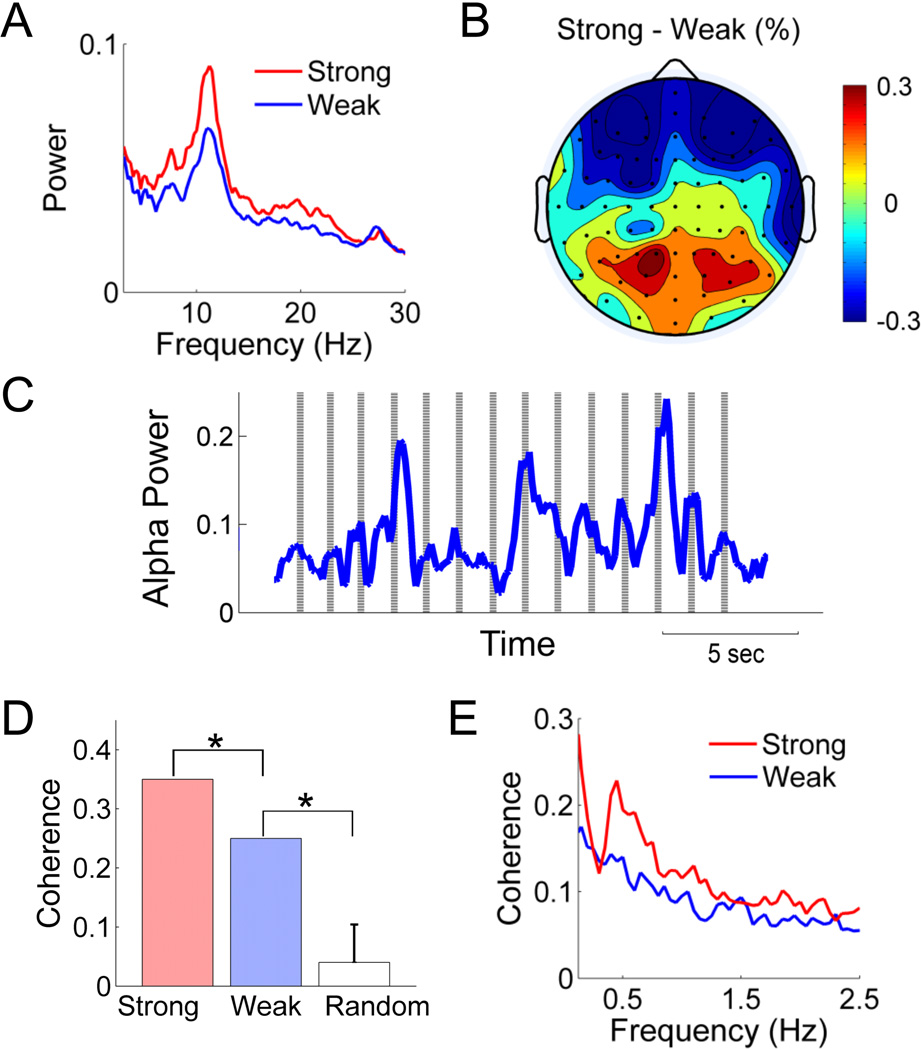Figure 1.
Spontaneous alpha power (power between 8–12Hz) is modulated by the intensity of the throbbing sensation. (A) Power spectra from a parietal-occipital channel. (B) Topography of the percentage change in alpha power calculated at each electrode by (Astrong−Aweak)/Aweak, where A stands for alpha power. (C) The point process of reported throbbing onset is plotted as vertical lines on which alpha power time series in PO3 channel was superimposed during stronger throbbing session. (D) Coherence around 0.7 to 1Hz between the alpha power time course and the throbbing reporting events in (C). The coherence is significant compared to random permutation (p< 0.05) under either weak or strong throbbing session. (E) Coherence of amplitude envelop of alpha oscillation was calculated between pairwise posterior channels, and then averaged. The temporal dynamic of alpha powers is more synchronous when stronger throbbing sensation was reported. The difference between two conditions is significant under paired t-test across channels (p<0.01).

